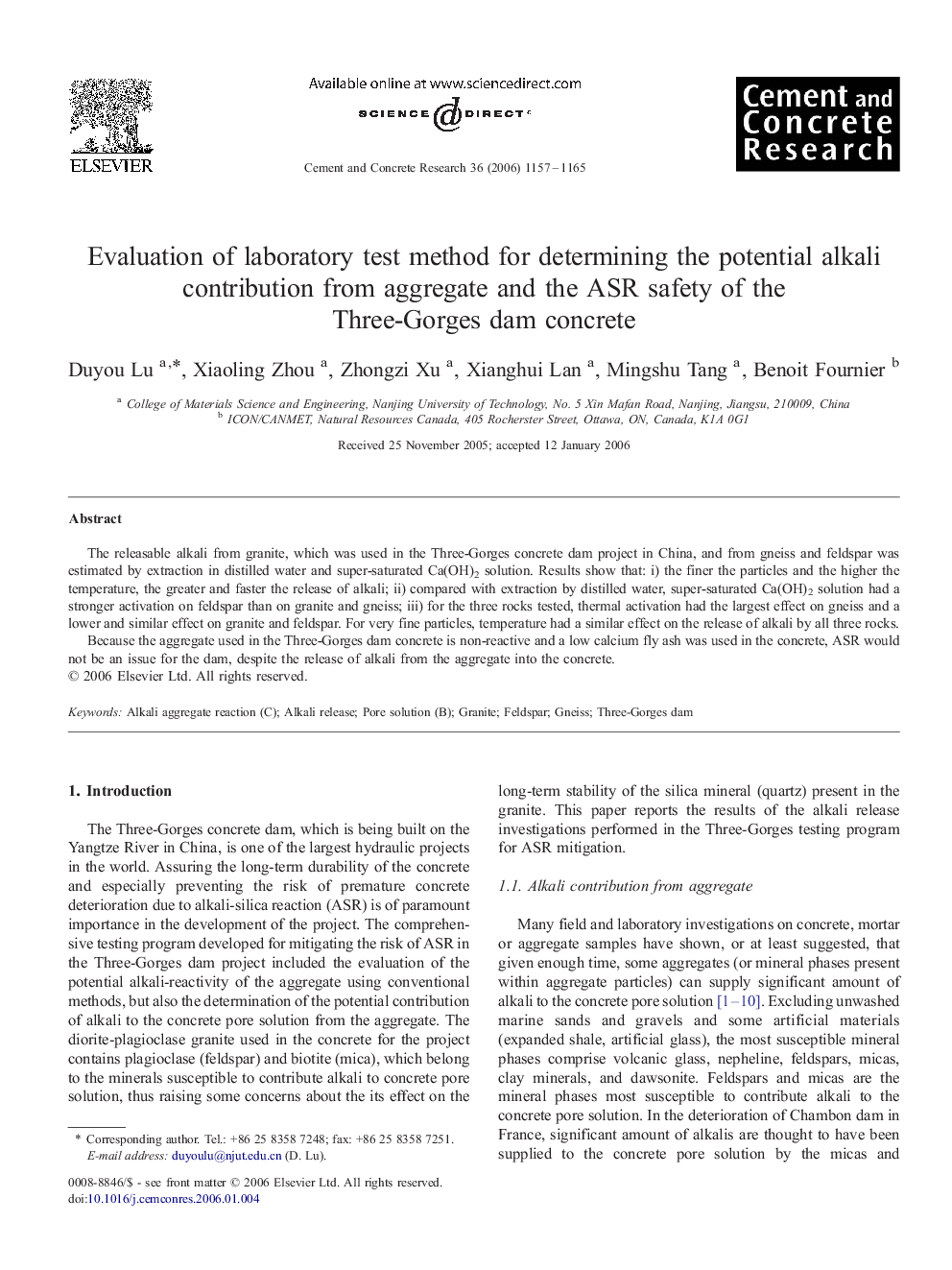| کد مقاله | کد نشریه | سال انتشار | مقاله انگلیسی | نسخه تمام متن |
|---|---|---|---|---|
| 1457739 | 989276 | 2006 | 9 صفحه PDF | دانلود رایگان |

The releasable alkali from granite, which was used in the Three-Gorges concrete dam project in China, and from gneiss and feldspar was estimated by extraction in distilled water and super-saturated Ca(OH)2 solution. Results show that: i) the finer the particles and the higher the temperature, the greater and faster the release of alkali; ii) compared with extraction by distilled water, super-saturated Ca(OH)2 solution had a stronger activation on feldspar than on granite and gneiss; iii) for the three rocks tested, thermal activation had the largest effect on gneiss and a lower and similar effect on granite and feldspar. For very fine particles, temperature had a similar effect on the release of alkali by all three rocks.Because the aggregate used in the Three-Gorges dam concrete is non-reactive and a low calcium fly ash was used in the concrete, ASR would not be an issue for the dam, despite the release of alkali from the aggregate into the concrete.
Journal: Cement and Concrete Research - Volume 36, Issue 6, June 2006, Pages 1157–1165